This lesson will be breaking down Internet Marketing into four different types of online business models and providing a straightforward, easy-to-understand formula for building a profitable internet business, as well as explaining the core competencies that any aspiring internet entrepreneur needs to be successful.
The Four Types Of Online Business Models That Lead To Wealth
Every single online business I’ve encountered falls into one of four categories:
- a content-based business monetized through advertising
- a service-based business
- an e-commerce business selling physical products
- a content-based business selling your own digital products
A content-based business involves creating a site with loads of valuable and helpful content. Monetization can occur through advertising, which means that you get paid every time someone clicks an advertisement on your site.
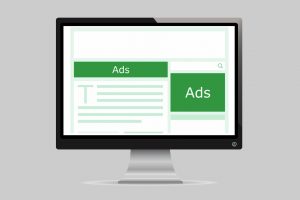
A service-based business is one where you get paid for completing services for clients. One example is an online writing agency where you charge a certain fee per article. Depending on the difficulty of the topic, and the number of articles required, you can either write the articles yourself or manage a team of writers to write the articles.
Another example of a service-based business is a Search Engine Optimization (SEO) agency where you charge a business owner a monthly fee to get their business website ranked highly in Google search results.

Running an e-commerce business selling physical products is another viable path. Physical products may be products that you produce or buy in bulk from a supplier and sell at a markup. E-commerce also provides the option of dropshipping, which eliminates the need to buy in bulk because the customer orders directly from you and the supplier ships the product directly to the customer. You never see or handle the product yourself.
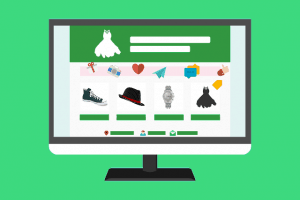
Another possibility is a content-based business selling digital products that you create. This is a subset of content-based business, however, instead of selling ad space, you’re selling your content. Examples of digital products you can create and sell are books, whitepapers, digital courses, audio courses, and even stock photos.
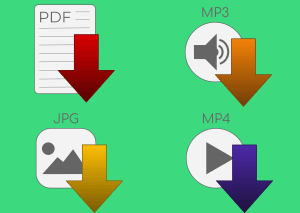
A common misconception about selling a training course, or any digital product, is that it has to be about Internet Marketing. This is incorrect; there are people making good money selling training courses about other topics.
For example, an Elementary School librarian in the United States created her own curriculums in digital format, which she updates every year and sells for $300 to $400 a pop. Any teacher knows creating curriculum is a time-consuming and tedious process; buying these curriculums at $300 each is a bargain in terms of the hours saved. This librarian now makes about six figures a month selling her digital curriculums to librarians across the United States.
What These Four Paths Have in Common
Every internet business, regardless of which of the four types of online business models it falls under, breaks down into what I call “reverse math.”
When setting internet business goals, whichever path you decide to take, remember this simple formula:
To earn X amount of dollars per month, you’ll need Y customers multiplied by Z dollars per customer. Think of it as an equation for revenue:
Y (customers) x Z ($ per customer) = X (goal amount to earn per month)

Let’s apply the formula to each of the four paths.
Content-Based Business (Monetized Through Advertising): Reverse Math
One way to monetize a content-based business is through advertising. Let’s assume you have a content-based business you’re going to monetize through advertising, and that you want to make $10,000 a month. The starting point for most people is Google AdSense, which displays advertisements on a website based on its content (and other factors). One of the ways to make money with Google AdSense is on a “per-click” basis.
If you opt for a per-click program, called Cost Per Click (CPC), you get paid a certain amount for every click that ad on your website gets.
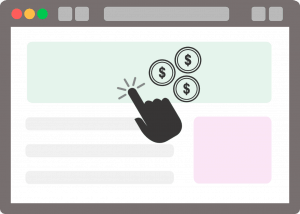
Applying the formula:
If you want to make $10,000 (X) a month, you’ll need 10,000 (Y) visitors to click the ad on your website if the payout is $1 per click (Z).
The problem with CPC is that most websites are lucky to even get a 3% Click-Through Rate (CTR), which is the percentage of visitors who click on an ad over the total number of visitors to your site.
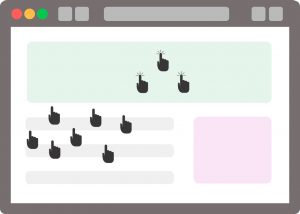
For instance, for every 10 visitors to this page, 3 of them click on the ad. The CTR of this page is thus 30%.
Given a 3% CTR, if you need 10,000 visitors to click the ad, you’ll need roughly 330,000 visitors to your website. The outlook is even more daunting if you have a 1% CTR, which is the common rate for an average website. At 1% CTR, if you need 10,000 visitors to click the ad, you’ll need 1 million visitors to your website a month.
Those are insanely difficult numbers to achieve. Receiving a million visitors a month requires a great deal of content to optimize for search engines and many visitors coming in every single day.
Don’t get me wrong, though. There are people who earn millions through Google AdSense, so it’s not impossible to make a lot of money this way. It’s just really difficult because most websites will only ever receive tens of thousands of visitors a month, if that. The CPC model is not the best path to monetization for most internet businesses.
Another way to monetize a content-based business is through a Pay Per Lead, or Cost Per Lead (CPL), model. Technically this falls under the umbrella of CPA Marketing, which I’ll dig into further momentarily.
With a CPL model, you get paid every time a qualified lead signs up for and expresses interest in a company’s products from your website. Companies that employ this model include insurance companies, mortgage companies, and home services. The CPL model generally pays better than CPC.
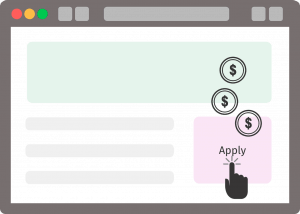
For example, if you write an article about a specific credit card, and a visitor clicks the link from that article to apply for it, you receive a commission for the lead you just generated for that credit card company.
Yet another way to monetize a content-based business is through other forms of Cost Per Action/Acquisition (CPA) offers, wherein you get paid by what is referred to as the “advertiser” every time a visitor takes a specific action on your site, such as signing up for a newsletter, registering on another website, or signing up for a free trial.
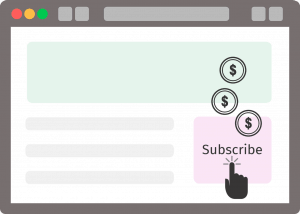
Companies that practice this model include Netflix and FreeCreditReport.com. Here’s how it works: when a website owner advertises Netflix’s free services and a visitor signs up for that free trial, Netflix pays the website owner a commission. Like the CPL model, the CPA model pays better than the CPC model.
Let’s apply the “reverse math” formula to the CPA model, pretending you’re getting $10 per free trial:
If you want to make $10,000 (X) a month, you’ll need 1,000 (Y) visitors to sign up for a free trial on your website if the payout is $10 per signup (Z).
Given a 1% CTR, if you need 1,000 visitors to click the ad, you’ll need roughly 100,000 visitors to your website a month. Getting 100,000 visitors to your site, monthly, is WAY more achievable than getting a million. It’s going to take a lot of time and hard work, but it’s much more doable than aiming for 1 million visitors each month (using the CPA model).
The reverse math still holds if, instead of advertising, you’re monetizing by selling another company’s product. Selling a $200 product that gives you a 50% commission means you earn $100 from every sale. Applying the formula:
If you want to make $10,000 (X) a month, you’ll need 100 (Y) visitors to buy the product on your website if the payout is $100 per product sold (Z).
Given a 1% conversion rate (in this case, the percentage of visitors who buy over the total number of visitors), if you need 100 visitors to buy the product, you’ll need roughly 10,000 visitors to your website a month. Again, this is a much more feasible number than 1 million, or even 100,000.
Service-Based Business: Reverse Math
One way to monetize a service-based business is to outsource a service. Imagine that you’re running a writing service where you outsource the writing to a team in the Philippines and pay $4 per article. In turn, you charge clients $6 per article and profit $2 per article.

Applying the formula:
If you want to make $10,000 (X) a month, you’ll need to sell 5,000 (Y) articles if you make $2 per article (Z).
Depending on the niche and how good the writers are, it’s possible to have 500 customers, ordering 10 articles each, per month.
Another service-based business you can build is a Search Engine Optimization (SEO) agency. This is a specialized industry and is thus considered a high-value business. Getting a company website ranked highly on search result pages is priceless, so, depending on the niche, an SEO agency can charge anywhere from $1,000 to $5,000 a month per client.
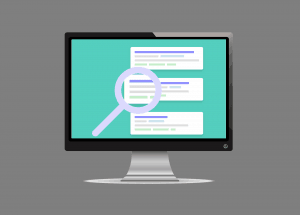
Applying the formula:
If you want to make $10,000 (X) a month, you’ll need to get 10 (Y) clients if you make $1,000 per client (Z).
Acquiring 10 clients may seem easy, but it’s not. It takes considerable experience to get to the point that a client is willing to pay $1,000 for SEO services. If you’re willing to put in the hard work, train extensively, and gain experience in a heavy-competition niche, such as real estate, you can eventually make $5,000 per client per month.
E-commerce: Reverse Math
The reverse math formula can also apply to a business selling physical products on its website. Let’s say, for example, you’re selling a product that makes you a profit of $1 per product sold.
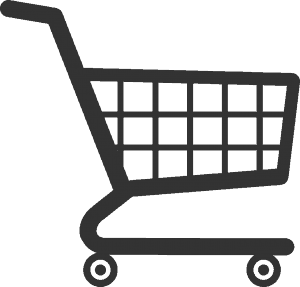
Applying the formula:
If you want to make $10,000 (X) a month, you’ll need to sell 10,000 (Y) products if you make $1 per product (Z).
However, there’s still the conversion rate to consider in this scenario. Given a 1% conversion rate, if you need 10,000 buyers, you’ll need 1 million visitors to your website per month.
If you sell a product that makes a profit of $10 per product sold, you’ll only need to sell 1,000 products to make $10,000 a month. Given a 1% conversion rate, if you need 1,000 buyers, you’ll only need 100,000 visitors to your website per month which, again, is more attainable than 1 million.
Content-Based Business (Selling Your Own Digital Products): A Quick Note
When selling your own digital product, the profit margins are usually at least double than when affiliating with a separate product publisher. The price point for digital products can be quite high, ranging up to thousands of dollars per sale.
However, a big drawback is the time and energy needed to create a digital product, so this typically isn’t the first form of monetization to try for. For all you know, you could put weeks or months of time and energy into developing a product that ultimately doesn’t sell.
Most people will monetize their site using one of the other three forms of monetization in the beginning and later expand into selling their own digital products to realize two to three times profit margin, and sometimes a multi-thousand-dollar value per conversion.
If you’re selling someone else’s digital product at $100 each, you only need 100 sold to reach your goal. But, if you’re selling your own high-ticket and high-value digital product, you only need to sell two per month to achieve your monthly goals. So, although it’s a very “high risk, high reward” path to monetization, and it requires a ton of time and energy compared to the others, it ultimately can be the most lucrative.
Key Takeaways from Doing All That Reverse Math
What does all that mean? What was the point of doing so much math?
By now, the trend should be obvious:
As your earnings or commissions per visitor go up, the number of visitors you need to achieve your goals goes down.
Reverse math aside, anyone planning to get into Internet Marketing needs to know how to drive traffic. Each of the Internet Marketing paths needs to be combined with traffic to earn massive profit, and that’s a lot easier said than done.
This brings me to the topic of free or paid traffic.
If you happen to have a couple of thousand dollars a month lying around to spend on advertising, that’s awesome. Paid traffic can yield results sooner than free traffic. However, if you don’t have that kind of budget, don’t feel like driving traffic to your site using free tools and resources is impossible. IT’S POSSIBLE, and I’ll outline how as we dive further into this training.
The Three Core Competencies You’ll Ever Need to Make Money
The four types of online business models that lead to wealth online require two factors to be successful: traffic and one of the following three core competencies:
- obtaining the most money for your traffic,
- obtaining inexpensive high-quality labor, and
- obtaining inexpensive high-quality products.
Getting the most money for your traffic, also known as Conversion Optimization, is a skill you’ll need to develop if you’re going down the content-based business path. Whether you plan to run a blog or a YouTube channel, and whether you plan to monetize through advertising or by selling digital products, knowing how to increase the percentage of visitors that click on the ads or buy the digital products on your website will be crucial to your success.
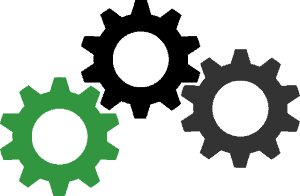
Getting inexpensive high-quality labor is a necessary skill required for a service-based business. Initially, you’ll most likely be doing everything yourself. To scale, you’ll need to learn how to get exceptional labor at the lowest possible price without compromising quality. The cheaper the labor, the higher the profit margins are, and the more money you’re going to make.

Getting inexpensive high-quality products is an important skill you’ll need if you want to do business in e-commerce and sell physical products. Whether you’re creating the product yourself and having to buy raw materials, or you’re having a supplier manufacture them for you, you’ll need to learn how to find the best deals on these products and materials. Much like outsourcing quality labor for the lowest possible price, getting high-quality products at a good deal is about lowering your costs to drive profit margins up.
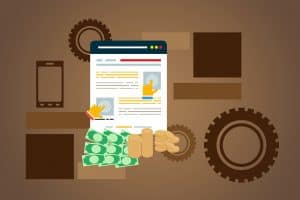
Bringing Reverse Math Full Circle
Internet Marketing can be broken down into the following equation:
ALL four profitable paths to online income = Traffic + ONE Core Competency
Internet Marketing is extremely overwhelming. I guarantee if you choose to pursue this track, you’re going to get overwhelmed several times along the way. It’s perfectly normal to become overwhelmed throughout this process because there is a lot to learn. Acknowledge and understand this early on so that you’re aware of when it’s happening and know to push through it.
When you start to feel overwhelmed, take a deep breath, review the reverse math again, and remember: you don’t have to learn everything. Think of the feeling of being overwhelmed as what stands between you and success; what stands in the way of changing your, and your family’s, life.
You only have to know ONE core competency inside and out. Combine that with traffic and you’ll have a potentially profitable internet business in no time.
Lessons 1–2 Key Takeaways
- How to use this training:
- Read Lessons 1 to 5 in their entirety
- Understand that there are no guarantees
- Don’t write off this training just because it’s free
- Use this course to break free
- The ONLY four types of business models that lead to wealth:
- a content-based business monetized through advertising
- a service-based business
- an e-commerce business selling physical products
- a content-based business selling your own digital products
- The reverse math formula that applies to all four paths of Internet Marketing:
- Y (customers) x Z ($ per customer) = X (goal amount to earn per month)
- The only three core competencies you need to make money:
- Obtaining the most money for your traffic
- Obtaining inexpensive high-quality labor
- Obtaining inexpensive high-quality products
- The formula to Internet Marketing success:
- All four profitable paths to online income = Traffic + ONE Core competency